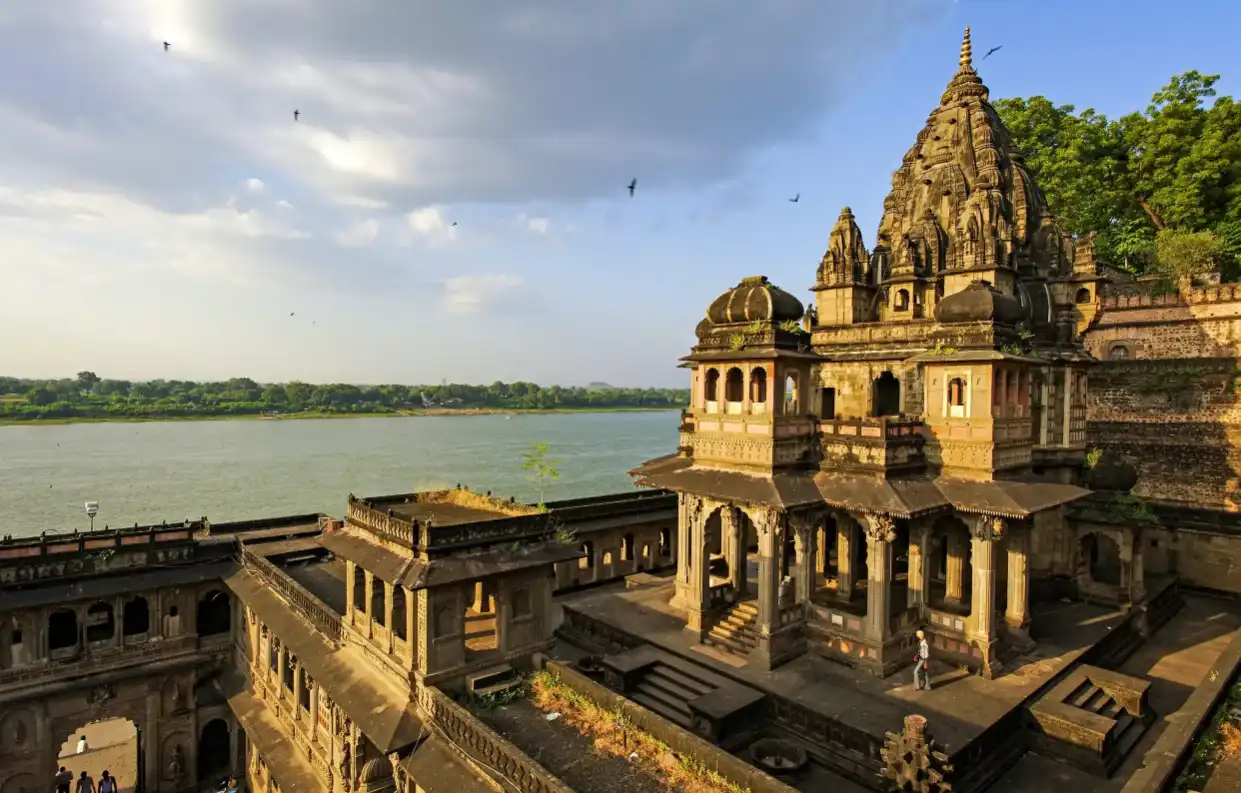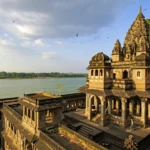Khajuraho Mandir – A Timeless Symbol of Art, Devotion, and Heritage
Located in the heart of Madhya Pradesh, Khajuraho Mandir stands as one of the most remarkable architectural and cultural marvels in India. Famous for its intricate stone carvings, spiritual ambience, and artistic expression of human emotions and divine love, Khajuraho is a UNESCO World Heritage Site that continues to attract travelers, historians, and spiritual seekers from around the world.
The Historical Significance of Khajuraho Temples
The Khajuraho group of monuments was built between 950 and 1050 AD by the Chandela dynasty. Originally, there were over 85 temples spread across the region, but only around 20 remain today in remarkably well-preserved condition. These temples represent a fusion of Shaivism, Vaishnavism, and Jainism, reflecting a society that respected religious diversity and artistic exploration.
The temples were forgotten and enveloped by dense forests until their rediscovery in the 19th century by British explorer T.S. Burt. Since then, Khajuraho has been considered not only a masterpiece of temple architecture but also a symbol of India’s rich cultural legacy.
Architectural Splendor
Khajuraho Mandir is renowned for its Nagara-style architecture, where every element, from the towering spires (shikharas) to the smallest carvings on the exterior walls, is a testimony to artistic brilliance. The temples are built on high platforms with multiple layers of sculpted figures that narrate mythological tales, daily life scenes, and intricate portrayals of human emotions.
The most striking feature of these temples is the detailed erotic sculptures that adorn their outer walls. Contrary to common assumptions, these carvings represent only a small fraction of the artwork and are deeply symbolic, representing the tantric philosophy of union between the physical and the spiritual realms.
Major Temples to Visit
Here are some of the most iconic temples you should not miss while exploring Khajuraho:
1. Kandariya Mahadev Temple
This is the largest and most ornate temple in Khajuraho, dedicated to Lord Shiva. It features a massive central spire surrounded by smaller spires, symbolizing Mount Meru and the cosmic universe. The temple is adorned with over 800 statues, including celestial beings, dancers, gods, and lovers—each crafted with lifelike detail.
2. Lakshmana Temple
One of the oldest and most well-preserved temples in the Western group, the Lakshmana Temple is dedicated to Lord Vishnu. Its elaborate architecture and stone panels are a treat for art and mythology lovers.
3. Vishwanath Temple
Another major Shiva temple, Vishwanath Temple features a beautiful Nandi Mandap (pavilion with a statue of Nandi, Shiva’s bull) and finely carved exteriors depicting divine musicians, dancers, and mythical beasts.
4. Parsvanath Temple
Among the Jain temples in the Eastern group, Parsvanath Temple is the largest and is revered for its minimalist yet detailed carvings. It emphasizes Jain values like peace, asceticism, and purity.
5. Chitragupta Temple
Dedicated to Surya, the Sun God, Chitragupta Temple is unique with a massive idol of Surya riding a chariot driven by seven horses. The temple also features carvings of celestial nymphs and hunting scenes.
Grouping of Khajuraho Temples
The temples are divided into three main groups:
Western Group: Most popular and contains the largest and most artistically detailed temples.
Eastern Group: Includes Jain temples and a few Hindu shrines.
Southern Group: Lesser visited but features temples like Dulhadev and Beejamandal, known for their elegant sculptures.
Each group offers a different spiritual and aesthetic experience, and all are maintained by the Archaeological Survey of India.
Best Time to Visit Khajuraho
The ideal time to visit Khajuraho is from October to March, when the weather is pleasant and perfect for sightseeing. During this period, the annual Khajuraho Dance Festival is also held, usually in February, where classical dance performances take place against the backdrop of these majestic temples. This adds a rich cultural layer to the travel experience.
Avoid peak summer months like April to June, as temperatures can be quite high.
How to Reach Khajuraho
By Air: Khajuraho Airport has direct flights from major cities like Delhi and Varanasi.
By Train: Khajuraho Railway Station connects the town to Jhansi, Delhi, and Varanasi.
By Road: Well-maintained roads link Khajuraho to Satna, Jhansi, and other nearby cities in Madhya Pradesh.
Nearby Attractions
Raneh Falls: Just 20 km from Khajuraho, this natural wonder features a canyon of volcanic rock formations and seasonal waterfalls.
Panna National Park: A short drive away, perfect for wildlife safaris and nature lovers.
Ajaygarh Fort: A historical fort on a hilltop, offering panoramic views and a glimpse into Chandela history.
Why Visit Khajuraho?
Visiting Khajuraho is not just about seeing temples—it’s an immersive experience that connects you with India’s spiritual history, architectural genius, and cultural depth. Whether you’re an art enthusiast, a spiritual traveler, or a curious tourist, Khajuraho will leave you enriched and inspired.
This destination offers a profound balance of heritage and harmony—where ancient stone meets eternal stories.
Book Your Khajuraho Tour with Antriksh Travel
Planning to explore the marvels of Khajuraho? We at Antriksh Travel offer tailor-made Madhya Pradesh temple tours and Khajuraho sightseeing packages that include guided tours, comfortable stays, and seamless travel arrangements.



